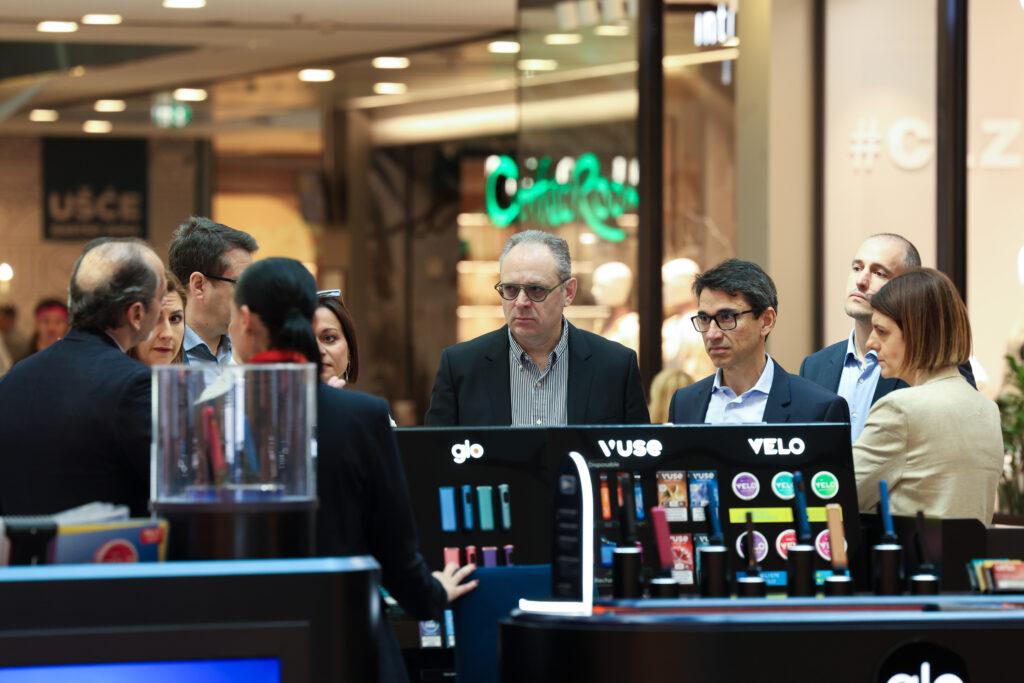Johan Vandermeulen has over three decades of experience in various managerial positions within BAT, where he played a pivotal role in the company’s transformation process
 Currently serving as Chief Operating Officer (COO), he is responsible for implementing BAT’s global strategy and accelerating the transition towards a smoke-free world. Johan’s career at BAT began in 1992 in the marketing sector in Belgium. Over the years, he has held diverse roles in markets worldwide, including General Manager positions in Turkey and Russia. His leadership has been instrumental in managing key acquisitions and expanding BAT’s presence in emerging markets.
Currently serving as Chief Operating Officer (COO), he is responsible for implementing BAT’s global strategy and accelerating the transition towards a smoke-free world. Johan’s career at BAT began in 1992 in the marketing sector in Belgium. Over the years, he has held diverse roles in markets worldwide, including General Manager positions in Turkey and Russia. His leadership has been instrumental in managing key acquisitions and expanding BAT’s presence in emerging markets.
Serbia is one of the markets where BAT has been successfully operating for many years. How would you assess the importance of this market within BAT’s regional and global strategy?
The Serbian market has proven to be highly open to innovation and aligned with global trends that BAT consistently implements in its operations. The best example is the factory in Vranje, which is now considered one of the most successful within the BAT Group. We continuously invest in production modernization, the application of cutting-edge technologies, employment, and the development of exports, all of which have further strengthened Serbia’s strategic position—both within the region and within our global network.
The new HILO and HILO Plus devices were first introduced in Serbia. What influenced the decision to make this market the first, and what role does it play in promoting BAT’s innovations?
The results we’ve consistently achieved in Serbia showed the market is ready for a new step — a modern, smoke-free approach where traditional cigarettes gradually fade out. That’s why we introduced HILO and HILO Plus, devices that reflect our commitment to science, technology, and innovation. With advanced heating technology, longer session duration, and an EasyView LED screen, they offer users greater control and an improved experience. Our aim was to provide both existing and new consumers with a product that combines cutting-edge design with scientifically proven reduced harm compared to conventional cigarettes.
 The concept of Tobacco Harm Reduction (THR) is at the core of BAT’s transformation strategy. How do you explain the significance of this approach for the end consumer, as well as for society as a whole?
The concept of Tobacco Harm Reduction (THR) is at the core of BAT’s transformation strategy. How do you explain the significance of this approach for the end consumer, as well as for society as a whole?
For us at BAT, this concept is not just an industry trend, but a fundamental shift in the way we think about the future of the tobacco and nicotine industry. Through science, innovation and a responsible approach, we aim to offer products with reduced harm compared to traditional cigarettes — giving adult smokers a realistic, science-based alternative. That’s why we’ve invested over €1.4 billion in development, commercialization and research. This approach can bring real benefits to society, and we will keep raising awareness and providing education to help people make informed choices.
How important is the Omni platform to BAT’s business transformation and the realization of its smoke-free future vision?
Our idea behind the OMNI platform was to bring all relevant data and research on reduced harm into one transparent, accessible place. It combines over a decade of BAT’s work in science, innovation, and analysis, serving as a knowledge hub for anyone interested in the principles and regulations of Tobacco Harm Reduction (THR). Developed with experts from various fields, it aims to support understanding, education, and open dialogue on this important topic.
What are BAT’s future business plans in Serbia, as well as globally?
Our plans in Serbia and globally remain focused on the vision of building a smokeless world. We continue to invest in people through education, skills development, and building teams that understand the needs of modern consumers. We are committed to transparent communication about Tobacco Harm Reduction (THR) and close cooperation with regulatory and professional communities. Our focus stays on developing innovative, science-based products of the highest quality. Serbia plays a key role in our regional strategy, while globally, BAT aims to achieve 50% of revenue from non-combustible products by 2035. We believe that transforming the industry goes beyond the products themselves — it requires a comprehensive approach, and we are ready to lead that change.